|
|
Period:
Second World War
Region:
Yugoslavia
The April War - Invasion of Yugoslavia 1941
The April war refers to the invasion of the Axis powers (code name: “Directive 25”) of the Kingdom of Yugoslavia on April 6, 1941. This operation marked the beginning of the Second World War on the territory of Yugoslavia which lasted for four years.
The aggression was conducted from many directions in air and land. German troops penetrated in the territory of the Kingdom of Yugoslavia from the northwest, across Austrian territory (already part of the Third Reich), Italian troops penetrated from the west across Dalmatia, Hungarian troops from the north across Bačka, Baranja and Slavonija, and Bulgarian troops from the east. Albanian troops penetrated together with Italian troops from the south across Kosovo, Metohija and Montenegro.
German troops used Romanian territory the northeast across Banat. Belgrade was heavily struck, as well as other Serbian cities: Split, Sarajevo, Banja Luka, Prijedor, Bihać, Čačak, Kragujevac, Šabac, Niš, Podgorica, Kumanovo, Skoplje, etc. At the same time, the German attack on Greece took place with the code name: “Operation Marita.”
The April war ended on 17 April 1941, and its aftermath was a capitulation, occupation, and division of the Kingdom of Yugoslavia. The Royal family, Karađorđević, and members of the government fled into London, Great Britain. The British Intelligence Service kept them in prison-like conditions, keeping them under surveillance even after the war ended. They were forbidden to return to Yugoslavia.
BACKGROUND
The Kingdom of Serbs, Croats, and Slovenians, the first South Slavic state, later renamed into the Kingdom of Yugoslavia, was created after the First World War, with its promulgation on December 1, 1918, in Belgrade. The territory of the Yugoslav Kingdom was divided into banates in 1929 and the structure of its government was a parliamentary monarchy.

Proclamation of the first South Slavic state
The royal title was held by the Serbian Karadjordjević dynasty. It consisted of Southern Serbia, Šumadija, Raška, Kosovo and Metohija, Eastern Serbia, Montenegro, Bosnia and Herzegovina, Vojvodina, Slavonija, a small part of Dalmatia, the Dubrovnik Republic, Lika, Kordun, Banija, Zagorje, Gorski Kotar, and Slovenia.
After the assassination of King Alexander I Karadjordjević in Marseilles on October 9, 1934, the country was ruled by regents: Prince Paul Karadjordjević, Dr. Radenko Stanković, and Dr. Ivo Perović, and the government was formed by Dragiša Cvetković and Vlatko Maček.

Belgrade's demonstration on March, 1941.
In the mid-1930s, Europe witnessed the rise of Nazism and Fascism, especially in Germany, Italy, and Spain. This led to the formation of the Tripartite Pact, on September 27, 1940, between Germany, Italy, and Japan. In the next months, this alliance was joined by the following countries: Hungary, Bulgaria, Romania, Albania, etc. Thus, the Kingdom of Yugoslavia found itself surrounded by Axis Powers.
In Vienna, on March 25, 1941, the signing of the protocol between the Kingdom of Yugoslavia and Nazi Germany took place regarding the passage of German and Italian troops through Yugoslav territory. Among the patriotic forces of the Kingdom of Yugoslavia, this was interpreted as treason, and the British and Soviet intelligence officers organized a military coup and demonstrations on March 27, 1941 in Belgrade resulting in the overthrow of the governorship led by Prince Paul and putting on the throne a minor king Petar II Karadjordjević.
Hitler changed the plans and the armed forces' plans to attack Greece, were diverted to the Kingdom of Yugoslavia.
The Situation in the Army of the Kingdom of Yugoslavia
The Army of the Kingdom of Yugoslavia was mainly supplied with contemporary weapons and material, although some kind of modernization was carried out with equipment and vehicles from Czechoslovakia. Fully mobilized, the Army was able to deploy 28 Infantry Divisions, 3 Cavalry Divisions, and 35 independent regiments. Of the total number of independent regiments, 16 were disposed at frontier fortifications and 19 were organized in units of the Reinforced Brigade.
Every unit had 1-3 infantry regiments, 1-3 artillery batteries and 3 units were organized in mountain units. The German attack, however, caught the Army of the Kingdom of Yugoslavia still in process of mobilization with only 11 divisions disposed at their positions at the beginning of the invasion.
The units were filled to between 70% and 90% of their full capacity as the mobilization wasn’t completed because Croatian and Slovenian recruits refused to respond to mobilization. The capacity of the Army of the Kingdom of Yugoslavia was around 1,200,000 soldiers when the German invasion took place.
The Yugoslav Royal Military Aviation possessed 450 fighter aircraft of domestic (the most well-known IK-3), German, Italian, French, and British origin, half of which were of modern type. Aviation was organized in 22 Bomb Squadrons and 15 Hunter Escadrilles.

Royal Yugoslav Air Force
The Yugoslav Royal Navy was equipped with an outdated former German light cruiser (suitable only for training), British-originated flotilla, Dubrovnik, three modern Belgrade class flotillas of French origin (two constructed in Yugoslavia and one still in construction), an aircraft carrier, four modern submarines (two French and one British) and 10 modern torpedo boats. Of older vessels, it had six former Austro-Hungarian medium-size torpedo boats, six minelayers, four large shielded river monitors, and numerous auxiliary ships.
The Yugoslav Army Command drew up a defensive plan under the code name “P-41”. The Army was fully deployed along the borders with Romania, Bulgaria, Albania, Austria, and Hungary. The entire front in Yugoslavia should have been defended by seven armies:
The First Army under command of General Milorad Petrović, together with the Third Army was supposed to defend South Serbia
The Second Army under command of General Milutin Nedić (brother of General Milan Nedić) was deployed northwest towards Slovenia and Zagorje.
The Third Army under command of General Milan Nedić was supposed to block borders around the Vardar region preventing Germans to penetrate into Serbia from Bulgaria.
The Fourth Army under command of Petar Nedeljković was deployed the southeast around Kosovo and Raška. In case of the collapse of all armies, it had a mission to organize its soldiers in chetnik (guerilla) unit and initiate guerrilla combats.
The Fifth Army under command of Vladimir Čukavac served as assistance of the Fourth Army.
The Sixth Army under command of General Dimitrije Živković was deployed the northwest towards Slovenia and Zagorje as assistance of the Second Army.
The Seventh Army under command of General Dušan Trifunović was at the north towards Hungary.
 |
 |
|
King Petar II Karadjordjevic |
General Dusan Simovic |
Commander-in-Chief of Yugoslav armed forces became General Dušan Simović (also in charge of the president of the Government). Vojvoda Petar Bojović was brought out from retirement and appointed as an assistant of Supreme Commander, young King Petar II Karađorđević.
President of the Government, Dušan Simović used diplomatic means to pacify enraged Hitler trying to convince him that Yugoslavia would remain neutral. In fact, he tried to gain time for defense preparation, but this turned out insufficient to make thorough arrangements for the defense of the country. Berlin didn’t want to wait and immediately started up war machinery. On the day of Simović daughter’s wedding, Germans attacked the Kingdom of Yugoslavia without previous announcement.
The preparation of the attack
German immediate attack surprised the Yugoslav Army finding it with only 66% of mobilized fighting capacity which included 28 infantry and 3 cavalry divisions. The Air Force of the Kingdom of Yugoslavia had only 300 aircraft at its disposal.
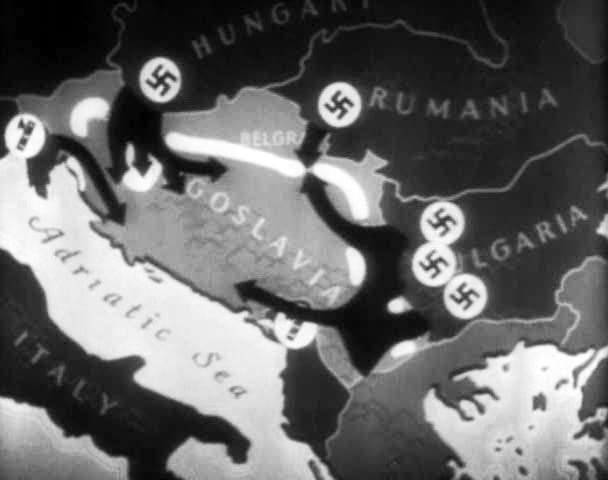
Hitler's plan: Destroy Serbs and Yugoslavia
The German invasion plan was drafted as follows: The Second Army of Colonel-General Maximilian von Weichs was planned to reach Zagreb, and across Bosnian mountains, Sarajevo as well. At the same time, an armored unit from Hungary was supposed to reach Belgrade. The main strike should have been performed from Bulgaria where the Twelfth Army was deployed under command of Field Marshal Wilhelm List whose mission was to advance towards Niš after the Vardar front breakthrough, and attack Belgrade from south simultaneously moving towards North Greece and South Serbia organized in left and right wings.
Since the counting of Second Army hadn’t been completed yet, the Twelfth Army started off the attack on Yugoslavia without its support, on April 6, 1941, while the Second Army began its advancement on April 8.
THE INVASION
On the night of April 5-6, 1941, Germans occupied Sip on the Danube.
Belgrade was bombed early in the morning on April 6. Hitler threw bombs with the devastating force of 1000kg on Belgrade, and it was symbolically named Operation Retribution. With the first strike the civil object was hit- the Avala Hotel, when, inter alias, minister in the Yugoslav Government, Franjo Kulovec was killed. 10,000 Belgrade citizens died as a result of bombing on April 6-7, 1941.
An enormous amount of bombs was dropped on residential quarters and the Serbian National Library was destroyed with the most of priceless materials burnt (known as cultural genocide). The attack on Belgrade was performed under command of General Lieutenant Alexander von Lohr whose Third Airfleet conducted bombing of the city.
German aviation attacked cities, such as Niš, Leskovac, Kragujevac, Novi Sad, Sarajevo, Mostar, Banja Luka, finding their citizens sleeping who, after the initial shock, began to look for shelter. Germans were precise in hitting targets with the help of Volksdeutsche.

Italian soldiers in occupied Yugoslavia
Before the beginning of the War, Captain Vladimir Kren (later the member of the Air Force of the Independent State of Croatia- NDH) fled from the Yugoslav Air Force taking its disposition plans with him.
THE AIR COMBATS
Defense of Belgrade was carried out by the First Airborne Brigade (JKRV) whose pilots confronted aircraft the Junkers Ju 87 (“dive bombers”) which were followed by the Messerschmitts, in the air above Belgrade. Nevertheless, the first day of war was also remembered as the day when German surveillance aircraft was downed by the Yugoslav Anti-aircraft Defense near the village Donji Dušnik in South Serbia, and pilots, after catapult, were taken to Niš. The Yugoslav government issued a Declaration of War against Germany and Decision on full mobilization, but it was too late. From the perspective of military strategy, the city of Zemun was seen as an important place because the Air Force Command, the Navy Command and the airport were located there.
The Royal Yugoslav Air Force confronted a numerically superior enemy. Yugoslav pilots, who defended the sky above Belgrade demonstrated exceptional courage and sacrifice receiving admiration from the enemy, as well. Bomber regiments bombed many times German armored columns, which were advancing from Bulgaria and several airports of the enemy in the territory of Bulgaria, Hungary, and Austria. Despite the act of treason by a number of Croatian and Slovenian pilots in the Yugoslav Navy, including JKRV, the remaining crew consisting of officers and non-commissioned officers from all nationalities, although largely outnumbered, impeccably performed their duty in confronting the enemy. It is a little known fact that suicidal attacks on enemy’s aircraft, mostly contributed to Russian pilots in WW2, were at first performed by Yugoslav pilots during the April War. Impressive contribution to air defense was made by the Counter-Air Defense.
Despite its heroic deeds, the counteractions of YKRV started to decline. With the help of treason and the Fifth Column which reported target locations to German airplanes, auxiliary aircraft of Yugoslav aviation were destroyed. Remaining aircraft were destroyed by their crew, so as not to fall in the enemy’s hands. Some pilots attempted to fly to SSSR or Greece so that they could keep participating in combat, but they mostly crashed due to bad weather conditions. Those who succeeded continued to fight together with the Air Force of the Allies.
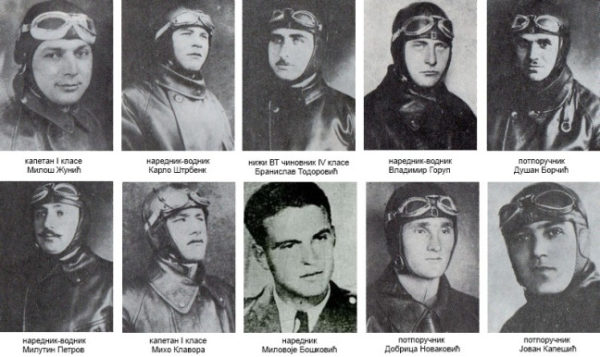
These are known names of killed pilots:
-
Miloš Žunić, died on April 6, near city of Pančevo
-
Karlo Štrbenk, died on April 6, near Glogonjski Rit
-
Dobrica Novaković, died on April 6, near Belgrade
-
Dušan Borčić, died on April 6, fell in Sarajevska street
-
Živica Mitrović, died on April 6, near Šid
-
Miho Klavor, died on April 7 near Krušedol Monastery
-
Vladimir Gorup, died on April 7
-
Branislav Todorović, died on April 7
-
Jovan Kapešić, died on April 7 near Beška
-
Milivoje Bešković died on April 7 near Kovilj
-
Milutin Petrov died on April 7 near place, where the Tisa flows into Danube
LAND WARFARE
A crucial penetration operation was performed by the Twelfth Army from Bulgarian territory. This Army had already been organized for invasion of Greece. Attack on the border front at Kriva Palanka near Belašica mountain was carried out against the troops of the Yugoslav Third Army (Moravia, Šumadija and Bregalnica divisions and Strumica detachment).
Those troops within the Twelfth Army, which joined the battle were the 40th motorized corp, the 9th armored and the 73rd infantry units, the motorized SS brigade and elements of the 18th corp of the 2nd armored division with the strong aviation support.
In the first two days of the war, German forces performed crucial action: they cut off the Moravija-Vardar valley and isolated the Yugoslav Army from getting any support from its allies, simultaneously reaching the Greek border and threatening the rear area of the Thrace front. The attack was conducted from three directions: Ćustendil-Kriva Palanka-Kumanovo. The Twelfth Army advanced at a fast pace and entered the city of Skoplje on April 7, 1941.
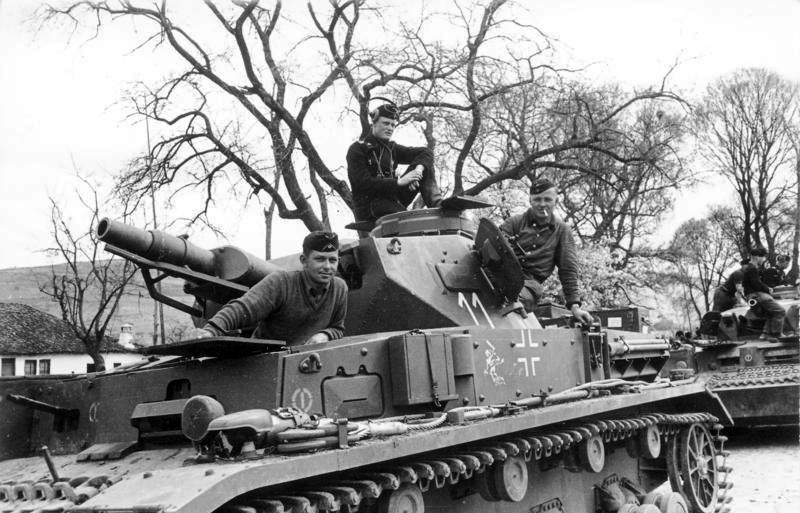
German soldiers (11th division) in occupied Yugoslav Kingdom
An armored division rushed to the West and joined Italians in Albania, while the majority in the Twelfth Army proceeded towards Greece to confront the Greek Army and the British Expedition Corp. The city of Niš was bombed on April 8, 1941, resulting in the death of 600 citizens. On the next day, German land units entered the city.
Betrayal of Croatians
The main German attack from the northwest was performed from two directions: Klagenfurt, Graz and Nađ Kanjiža. where the concentration of the Second Army was still in progress together with the 11th division under command of General-Colonel Maximilian von Weichs. The 46th armored corp rushed from the northwest to Belgrade facing poor resistance.
Croatians were placed to fight this corp, but not only did they do anything to stop German soldiers, but they welcomed them, thus betraying the country. Such an epizode also happened in the military garisson in Sinj where Croatian soldiers and officers rebelled and sang “Villa of Velebit” (Croatian patriotic song).
On the Sarajevo front, commander of the Second Army, General Bogdan Maglić left the defense line under the pretext of illness and need for treatment in Sarajevo, only to become Ustasha general after creation of the Independent State of Croatia. A similar case happened in Šibenik, where commander of Jadran Division, Petar Kvaternik (brother of Slavko Kvaternik) ordered the surrender of arms and arrest of all Serbian military cadres.
German units entered on April 10, 1941 in Zagreb where retired Colonel Slavko Kvaternik, on behalf of the leader Ante Pavelić proclaimed the Independent State of Croatia. Immediately after German attack, Vlatko Maček blamed and left an already shaken Yugoslav government and called members of his Croatian Peasant Party to be loyal to the Third Reich.
Advancing in Serbia
The Yugoslav Army retreated to Čačak on April 13, 1941 after insignificant battles, and Kraljevo faced entry of German division from the direction of Kruševac without much resistance.
The invasion was conducted by the Italian Army in coordination with Germans. Thus, the Second Italian Army under command of General Ambrosio, concentrated along land frontier, penetrated from the direction of Istra and Slovenian shore, while the Ninth Army under command of General Cavallero initiated attack from behind (from the direction of Albania). The southeast front under command of Milan Nedić collapsed.
In direction towards Niš, the 11th armored division broke weak defense at the place called Ploče and occupied Niš at 9:00 am. In the afternoon, it invaded Aleksinac, which was defended by an infantry battalion from reserve and by the 1st Artillery Division, and finally took over the place named Ražanj. Kleist, therefore, entered Niš with his troops, hence accomplishing Hitler’s goal to cut off the route that would allow the Yugoslav Army reach Greece, and to prevent the formation of a new Salonika front.
On April 9, 1941 Germans pursued units of 5th Army which were deployed at Niš sector. These were in chaotic and disorderly retreat along Nišava valley and the Kutinska river. The Drina Division of the Royal Yugoslav Army retreated in the face of the rush of German tank units on the route Babušnica-Svođe-Vlasotince. German motorised units cut its retreat route near village Ljuberađa. This terrain witnessed fierce fights with many casualties from both sides. Having suffered heavy casualties, the Drina Division retreated towards Leskovac. While German troops penetrated along the valley of the Kutinska river on the main route to Niš, a broken Yugoslav Army was moving in the mountainous areas out of the main directions.
On April 10, 1941, units in Kosovo faced disorganization, and the commander of the Third Army ordered a blockage of routes to Metohija and Raška with the help of improvised units. Continuing its operation in the Južna Morava valley, the units of the 11th armored division took over towns Paraćin, Ćuprija, and Jagodina, and advanced towards Kragujevac. The Supreme Command issued directive No. 120 on retreat of troops on the line Bojana-Metohija-Kosovo-Kopaonik-Kragujevac-Belgrade-Sava-Una. Under this directive the 5th Army was supposed to retreat even further, but its realization was not possible. More attainable was the call of the Supreme Command sent to soldiers to fight Germans wherever they encountered them. The German Command ordered the 12th Army to focus on Greece, and 2nd Army reinforced by the 1st armored unit to take over Belgrade and finalize the break of the Yugoslav Army.
The left wing of the Army didn’t even exist, but only small units, which, being in total chaos, surrendered to Germans. The total defeat meant the collapse of the government led by Simović. Its vice president Vlatko Maček resigned on April 8, 1941, accompanied by several Croatian ministers: Josip Torbar, Baroša Smoljan, and Ivan Andres. While they left for Zagreb, radical Muslim leader Džafer Kulenović retreated to Sarajevo. Leaving positions in the government, in other words, deserting of ministers represents a unique event in the April war. Calling his military followers to be loyal to the new Ustasha’s government on April 10, Maček secured the legitimacy of a power transfer and validated separatism and the break of Yugoslavia as a country. The promise of Dr Ivan Šubašić that the debt would not be disavowed proved empty.
CRISIS IN THE YUGOSLAV GOVERNMENT
From the very beginning, the Supreme Command failed to control the situation. At the meetings of ministers in Sevojno, where the government was placed, General Dušan Simović complained about poor connections in command, especially denying to issue orders to units via the post office. He found the situation difficult, but not tragic, and believed that the front could be stabilized. In order to prevent the complete breakdown of the army and the government as well, he declared on April 12 that he had full confidence in the moral strength of the army and people, and that he had faith in amity with SSSR. However, everything had already been lost and complete defeat was on its way.
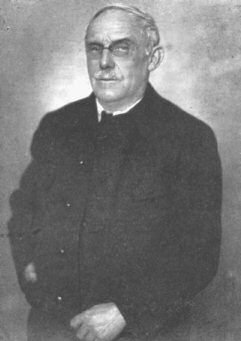
The elements of the 8th German armored division entered Zemun on April 12, 1941, without any barrier. On the next day, administration in Zemun was taken by the City Hall. The establishment of the occupation authorities led to significant changes. On April 13, Germans broke the last defense line at Konjarnik and marched to Belgrade, organizing a parade in front of the National Assembly. Field Marshal Ewald von Kleist and Maximilian von Weichs soon arrived, too. This was third entry of Germans into Belgrade in the 20th century, after the entry of Austro-Hungarian troops in 1914, and their joint entry with Germans in 1915.
Dušan Simović received this information from his adjutant in the place called Pale in the Primary school, where General Staff of the Royal Yugoslav Army was placed. After failing to get urgent correspondence with an English representative, he received a letter from general Dill in which he stated that England wasn’t in the situation to organize the evacuation of the Yugoslav Army through Navy base in Boka. Realizing the difficulty of the situation, he organized a new meeting in midnight of April 13, 1941. The Army collapsed and the government went through a crisis.
Mutual mistrust and questioning of who was responsible for such a quick breakdown occurred in the government. Some ministers including Dr. Slobodan Jovanović, Bogoljub Ilić and Marko Daković accused Croatians of betrayal. The government held the last consultation in Pale. The meeting was held on Catholic Christmas on April 13, 1941. Dušan Simović filled a report that the situation was difficult but not hopeless. It was rumored that fight would have continued on the new front Sava-Drina. In the end, the decision was made to relocate the government in Nikšić for the better security. Simović suggested Reserve General Danilo Kalafatović to become commander of the Supreme Defense. The possibility of capitulation was not considered at all, although some ministers thought that the situation was much more difficult than it was represented by Simović.
Evacuation of King Petar II Karađorđević
On the next day, the government went to Nikšić without General Simović, and first what they heard was that King Petar had already left for Greece. Hundreds of soliders were loading cargo planes with gold at an improvised airport in Nikšić. During the evacuation, however, two well-known persons died. During the transport of gold in a battleship in the Aegean sea, the ship turned over and minister in the government Marko Daković and historian Vladimir Ćorović died.
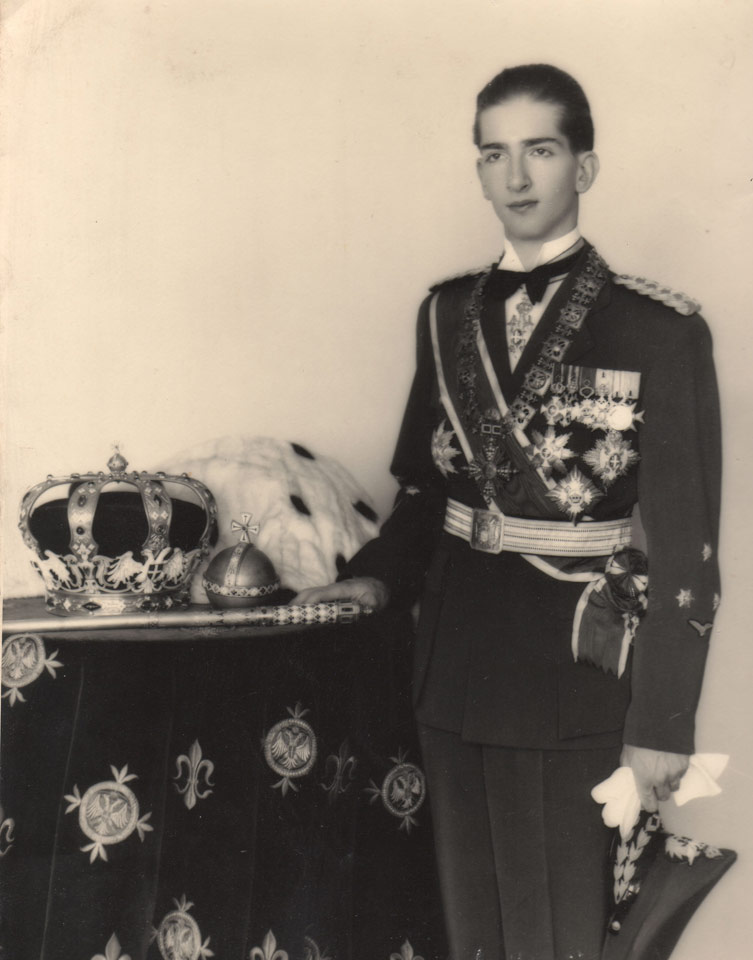
The king Petar 2 Karađorđević
At the last meeting of the government in Nikšić held on April 15, 1941, it was concluded that Yugoslavia would not capitulate as a state, which meant that only the army would capitulate and that the government and king were going abroad to continue resisting. This plan was made by Dr. Slobodan Jovanović, who gave it to Simović, who then gave it to Kalafatović. On the same day, Simović gave an order to Kalafatović to conclude a truce with Germans for two reasons: it was impossible to give resistance on the line Drina-Sava, and because the new events happened in Croatia.
King Petar II Karađorđević together with the government left the country on April 15, 1941. They were welcomed by British generals, Dill and Wilson on the airport in Atina, and after travelling through Yerusalim and short break in Cairo, they finally arrived in London.
HEROISM OF INDIVIDUALS
Although their units were completely crushed, some soldiers and officers refused to capitulate and continued to fight. On Rapaj hill two young reserve officers organized resistance of their own accord, fighting against Germans on April 12, 1941. In the Šabac region, the confrontation broke out on April 12, 1941, when soldiers from several units of the First Army attacked the German motorized units. Soldiers were holding Mišаr hill and defending the city. On April 13, the 60th cavalry regiment of the Yugoslav Army initiated an attack to enter Šabac and try to take it over from Germans, but it was decimated and forced to retreat. Some units of the Second Army gave tough resistance in the route to Užice. Germans bombed the city on April 15, and stroke it with heavy artillery. The commander of a military garrison refused to surrender and committed suicide. On April 17, Sergej Mašera and Milan Spasić sank the destroyer named “Zagreb” in Boka Kotorska.
Commander of Operations Department, Colonel Draža Mihailović avoided capture in Sarajevo, and while continuing to fight against a German armored unit on April 13, near Train Station Ševarlije and in a place called Petrovo Selo, he was breaking through to reach Doboj. Sergeant in the Yugoslav Army Boža Petrović managed to save a flag of the 41st infantry regiment in Osijek and bring it with himself. This flag became the flag of the Yugoslav Army in the Fatherland.
CONSEQUENCES
Many questions still remain unanswered, and one of them relates to the unclear activity of the government, the army, and commanders between March 27 and April 6, 1941. It is clear that mobilization was ineffective, that only 11 divisions were deployed at their defensive positions before invasion, that the defense plan was inadequately organized, that the government failed to keep unity during the invasion and that majority of Croatians gave up of the fight and surrender to the troops of Nazi Germany. This is confirmed by the fact that the newly formed Croatian Army of the Independent State of Croatia included 31 generals, 228 colonels, 245 lieutenant colonels, 254 majors, 1,005 captains, and 417 lieutenants of the Royal Yugoslav Army.
When general Milan Nedić became president of the government of “National Salvation” in his first speech to Serbian people on September 1, 1941 said: “Sixth April was not Serbian but Yugoslavian disgrace”. Most units, despite their wish to give resistance were not adequately equipped to confront German military force. The Army of the Kingdom of Yugoslavia failed to suppress German tanks and dive bombers.
The brave feat of pilots, who, although overpowered in numbers, experience, and aircraft flew their aircraft and heroically defied their enemies will be remembered.
The bombing of Belgrade in 1941, which was proclaimed as an “open city” meaning that it will not be defended, demonstrated that fascists didn’t care for international war rights and that they put Belgrade on the list of cities that suffered enormous damages as a result of the bombing. Starting from Gernika, this list includes Rotterdam, Paris, London and many others. The result of the German bombing was the collapse of infrastructure and the damage inflicted on the National Library, which contained a lot of documents and writings. This loss is irreversible.
Moreover, this bombing decided the war outcome because, from the very first day, everything that had had any tactical and strategic characteristic of military and civil nature was destroyed leaving the country paralyzed. There is evidence that posters that called for mobilization proclaimed on April 7 hung in some cities like Sarajevo as late as April 12.
The organization was such a failure that nobody knew how much of the territory Germans captured, and government didn’t even know that the capitulation had been signed. On several urgent meetings, Simović notified the government about the situation on the front until they were told to move to Nikšić from where they would be taken to Allies by plane.
Patriarch of the Serbian Orthodox Church Gavrilo Dožić wrote in his Memoirs that “thinking how to save the government and own families, and not how to save the country and people, largely prevailed”.
Finally, the collapse of Yugoslavia was inevitable. The state was parted, the army was not capable to fight against Germans, mobilization wasn’t organized on time, and all the plans for saving the country were disrupted by the resistance of Croatian armies and generals. Due to chaos in the Supreme Headquarters that prevailed during the very first days of the invasion, units didn’t know what they should do, they were mutually disconnected, they were not given clear orders, but they were making decisions regarding the fight against Germans on the terrain. Nevertheless, it can be concluded that the army was surprised by the strength and rapidity of the enemy, who easily defeated the Royal Yugoslav Army, after the occupation of Poland and Western Europe. From the very beginning, the defense plan, which included protection of all boundaries was doomed to failure because the army wasn’t adequately equipped for the defense of all boundaries. Already becoming very loose, the army and the government were now completely broken. The only worthy resistance the army gave was against Italians in Albania.
OCCUPATION
After the April war, the territory of Yugoslavia was divided between the Axis powers. Hitler held Serbs accountable for the war and divided Serbia into many occupation zones. Croatians received independent state and their country spread from Slovenia to Belgrade, and from the Drava river to Jadran. It encompassed Slavonija, Zagorje, Kordun, Banija, Lika, a part of Dalmatia, Dubrovnik, Gorski Kotari, Bosnia, Bosanska Krajina, Herzegovina, and Srem.

Slovenia was divided between Italians and Germans (this was only territory directly occupied by Germans), Bačka and Novi Sad were captured by Hungarians, large part of Eastern Serbia and South Serbia was taken by Bulgarians, Kosovo and Metohija, and remaining part of the Vardar region belonged to Italians, who integrated it with the state of Great Albania. Montenegro became an Italian protectorate. The remaining part of Serbia was organized in so-called the state of Serbia under the authority of general Milan Nedić. This state acted as a German puppet and not respected by German occupation forces.
The territory of Yugoslavia would have soon witnessed two resistance movements:
-Chetnik guerilla under command of the colonel of the Yugoslav Army in the Fatherland, Draža Mihailović
- Partisan movement under command of J.B. Tito and communists.
These two resistance movements had short cooperation in Autumn of 1941 in the Šumadija region, but they were separated by ideological beliefs. Chetniks wanted to preserve monarchy and communists saw the war as an opportunity to perform a socialist revolution.
Tags:
|
|
|
|
|
|
|
|
|
|
|
|
OCCUPATION YUGOSLAV KINGDOM
|
|
|
|
|
|
|
|
|
|
|
|
| | | |
Please, vote for this article:
Visited: 6165 point
Number of votes: 19
|